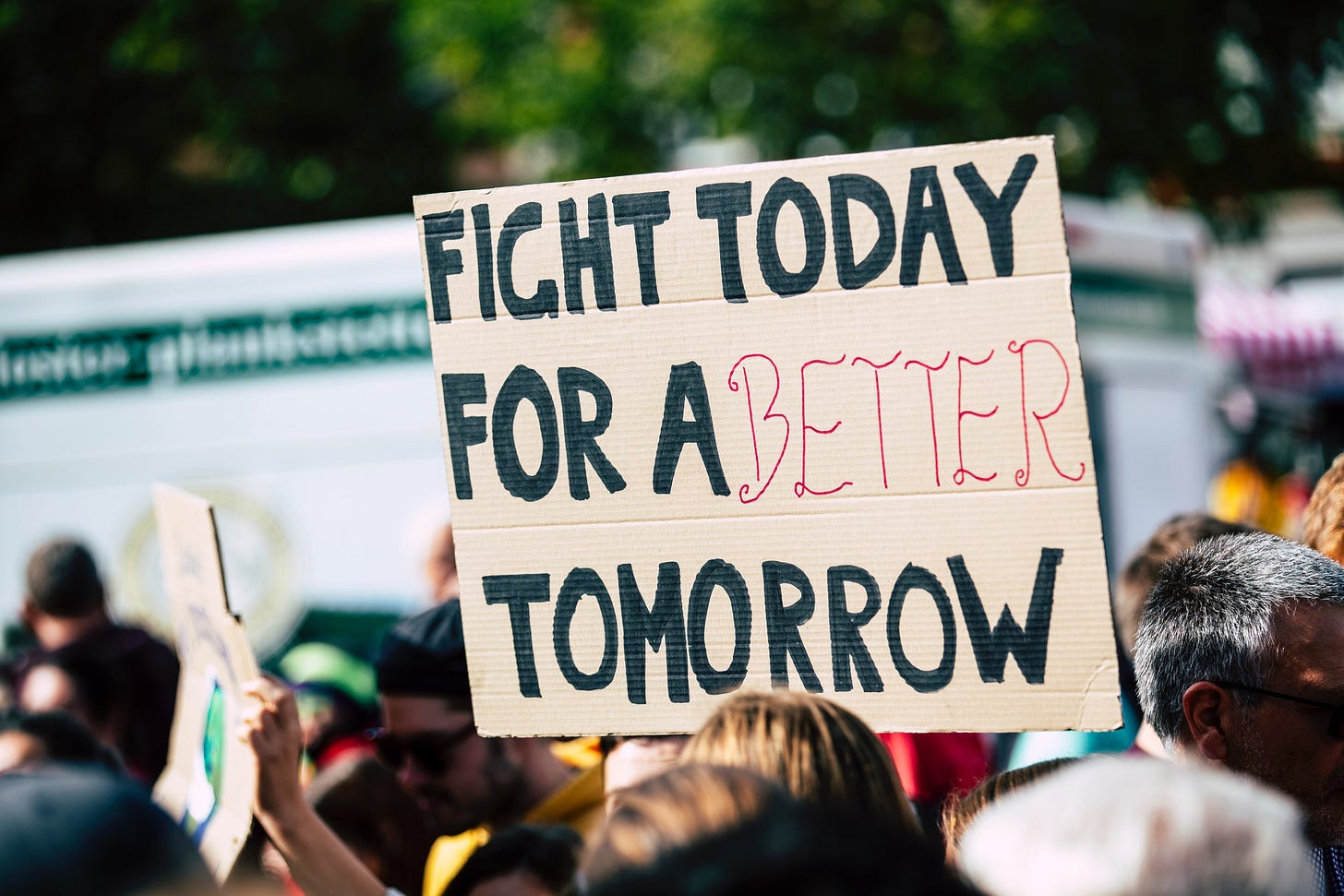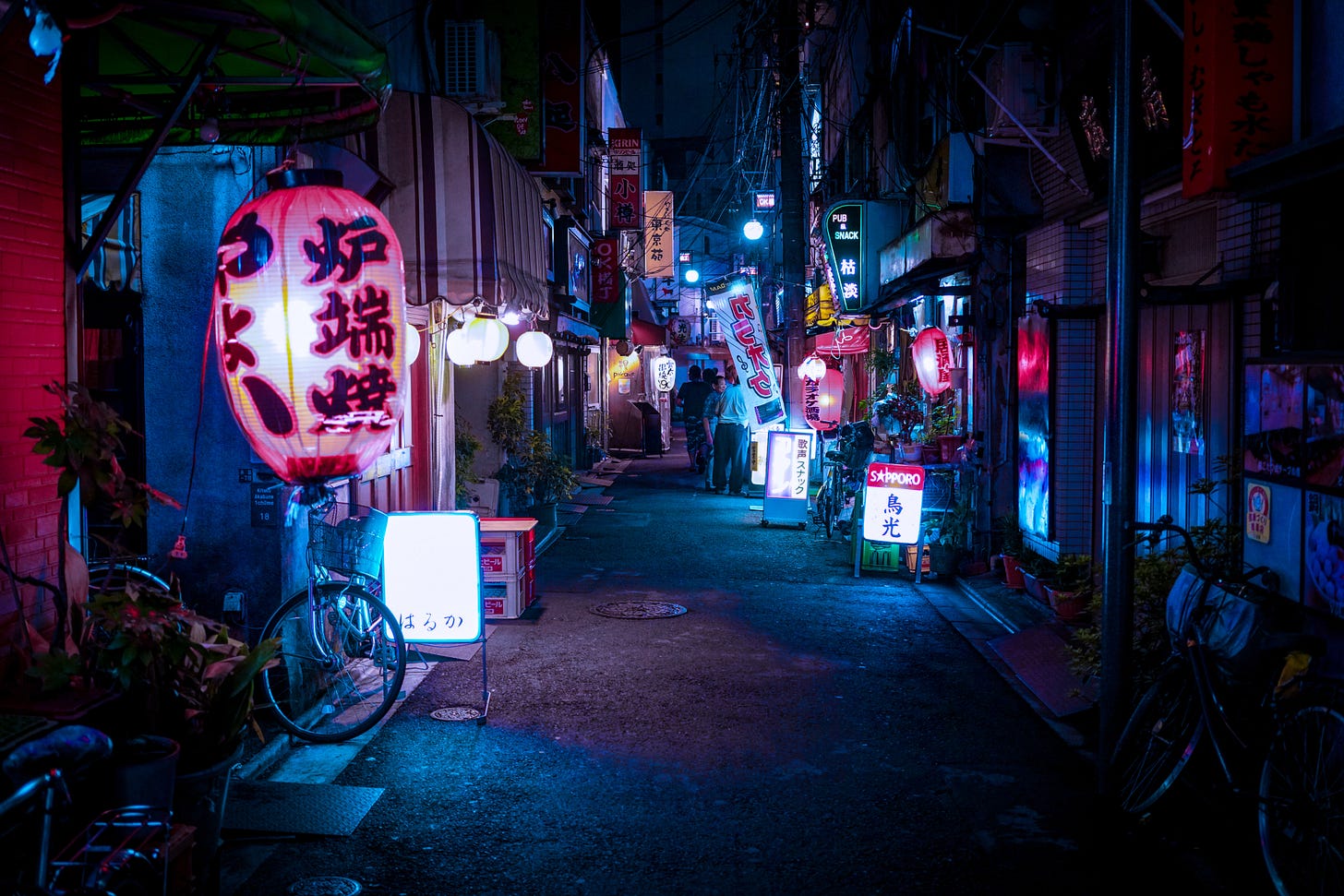It Doesn't Have To Be This Way
Thinking about the public power of public space
Years ago, during my undergrad I was introduced to the idea of social history.1 I was in a course on 20th C American history and we got into a lesson on the growth of the suburbs and the various reasons that caused it. While this extremely niche topic did not excite most of my classmates, I was fascinated. What stood out the most to me was the idea that everything we presently experience comes from somewhere and has many different factors that contribute to its existence.
Now, this may not seem that groundbreaking of a concept — of course everything has a history you might be thinking. But, I think sometimes it’s easy to forget that the systems and structures that we take for granted were not always here. And that’s something that brings me great hope.
I was reminded of this while recently reading some social history on the development of the street, a topic I am passionate about and have written on before.
The author of this particular piece I was reading was making the point that our present understanding of the street as a place primarily for cars has not at been the norm for most of our history. He writes,
“For most of urban history, city streets were for everyone. The road was a market, a playground, a park, and yes, it was a thoroughfare, but there were no traffic lights, painted lanes, or zebra crossings. Before 1903 no city had so much as a traffic code. Anyone could use the street, and everyone did.”
While I could easily go on here about the beauty of multi-functional streets, how we deliberately travel to places that still use them because they are so compelling, and how much we’ve lost by given streets over to personal vehicles; I’d rather zero in on that key disclaimer the author gives up front: streets were meant for everyone.
The street is a public place.
I think it’s fascinating that in the first decade following the use of the automobile, people rose up to retain control of their streets against the private interests of drivers.2 They fought to keep streets public; banning things like curb-side parking and keeping speed limits to 16 km per hour. And when a driver killed a pedestrian, they were met by an angry mob. It’s an extremely important reminder that the burden of protecting public spaces falls to all of us.
It’s also a good lesson in how we lose.
Decades of lobbying from the automotive industry slowly changed public perception on what streets were for. They also waved the banner of public safety as a way of convincing people that the best thing for everyone was to give pedestrians their own spots — off the streets. Soon jaywalking was made illegal and pedestrians were pushed to sidewalks and specific crossing spots in order to make sure they weren’t putting themselves in the path of danger. But note the subtle shift in thinking that won the fight, the responsibility of safety fell to the pedestrian and not the driver.3 As the author of the previous book noted, the automotive industry had to “change the idea of what a street is for, and that required a mental revolution, which had to take place before any physical; changes to the street.”
Privatization wins by selling us on an idea that it is actually better for everyone if we give them control of our public resources. It does this by playing to our base fears around safety and concern for our wellbeing.4 And we fall for it again and again.
Yet this is where social history brings me comfort. Knowing that these systems and structures have changed in the past means that they can change again — if we let them. As big and entrenched as they might seem, they are not eternal. It reminds me of a great Ursula K Le Guin quote:
“We live in capitalism — it’s power seems inescapable.
But so did the divine rights of kings.”
Sometimes simply knowing that something is capable of change is enough. It can weaken even the strongest resistance to that change because it gives people a sense that it is possible to imagine a world beyond it. This is how social change begins. We don’t even need to have solutions or a clear sense of what’s next when confronted with these entrenched systems and structures. That can be an intimidating part when considering a change to a status quo. I trust better minds than my own can figure out how to do it right. Maybe my part right now is to unflinchingly say, because it can be better it should be.
So let’s do it better.
Thanks for reading to the end,
Weekly News Digest - “The Blowhole”
Here are some emerging stories and events that we think will have an impact on our region that we’re keeping our eye on.
Phosphorus pollution choking the life out of Lake Simcoe. An important look at the environmental issues threatening our region specifically. This is why we’re working to expand protections on local natural resources.
‘Not Our Choice’: Bradford library workers mandated back to work. For anyone who might not be aware of this important update to the Bradford library worker’s strike. It may seem as though the strike is over because the library is back open. However, it’s important to note that they are back to work because of arbitration, something the town sought. This is a highly unprecedented way for an employer to respond to a strike and is worth keeping an eye on for how this all unfolds.
Join the Pod
Like what we talk about and want to engage with our coalition more? Check us out on social media or drop us a line if you’d like to volunteer: info@simcoecountygreenbelt.ca
For those that might not be familiar with the term, social history is a way of looking at the past that explores the lives and experiences of ordinary people (as opposed to the the rich and powerful). As a social history, its focus is the way human society in a particular context comes together.
See Peter D. Norton, Fighting Traffic.
You can trace this same line of thinking to the people who suggest that it’s unsafe for kids to be riding their bikes in streets or who put the burden of watching for cars backing out of their driveway on the pedestrians as they walk on the sidewalk.
Or our kids, as we have seen over and over again in attacks on other public institutions.







